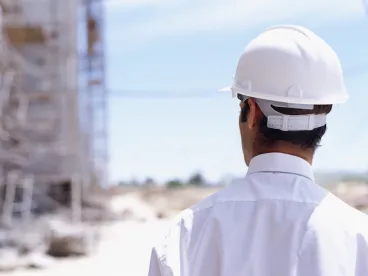With many NYC construction projects deemed non-essential, owners find themselves with partially completed work coupled with legal obligations to maintain the safety of the property. The temporary shutdown shifts responsibilities (and liability) for maintaining the safety of the property and the public to the owner. From maintaining permits to weekly inspections and weather protection, the owner is now tasked with numerous roles and responsibilities more typical of a general contractor. Failure to understand and address these requirements places the owner at risk of noncompliance and potential delays when work is ready to resume if for example, permits have lapsed or areas of the site are no longer code compliant. The full New York City Building Department bulletin issued this week, provides guidance to owners and contractors regarding the minimum requirements for maintaining construction and demolition sites when operations are suspended (the “Bulletin”).
While the Bulletin also outlines special requirements for operations suspended in the excavation/foundation phase (many of which must be completed within 48 hours of work suspension), the information presented below focuses on the ongoing obligations of the owner of a suspended construction build project.
Permits/TCOs
Pursuant to the Bulletin, permits already in effect, including but not limited to DOB, DOT and FDNY permits, shall remain in effect until the end of the term for which they were issued and must be renewed for as long as work remains suspended. Permits are not automatically vested. Similarly, Temporary Certificates of Occupancy (TCOs) must be kept current and renewed and all work conditions needed to maintain TCOs shall continue to be met.
Securing and Maintaining the Site
“The owner of any site, subject to the provisions of this bulletin, is responsible for ensuring the site is secured and maintained in such a manner as to safeguard the public and property throughout the duration of time operations are suspended.” Id. The Bulletin outlines the following minimum requirements:
-
Inspections:
The owner or owner’s representative, must conduct no less than weekly inspections. Additional inspections must be conduced the day of and the day after severe weather. For sites that require a site safety manager, site safety coordinator or construction superintendent, the safety inspections shall be performed by an individual who possesses a Site Safety Training (SST) Supervisor Card. Reports of all safety inspections conducted by the owner or owner’s representative shall be signed, dated and maintained on site, available for inspection by the commissioner upon request. If inspection was conducted by an SST, a weekly certification must be prepared and sent electronically to the DOB. When personnel are at the site to perform inspections, all health precautions as articulated by local, state and federal health officials shall be followed. If the Owner’s existing building maintains tenants or occupants the inspection process is the same.
-
Utilities/Weather Safeguards:
All utilities essential for the site must be maintained such as electrical service for public sidewalk and walkway lighting, exit signs and illumination and safeguards of utilities from freezing. The site should be safeguarded from high winds by securing or removing light weight materials and properly securing equipment and temporary construction. In addition to proper lighting, public sidewalks and walkways shall be maintained in accordance with the Building Code and DOT regulations which require that these areas are free from ice, snow, grease, debris, tripping hazards, etc.
-
General Site Conditions/Site Protection Measures:
The site must remain free from garbage, construction and demolition debris, excess vegetation and standing water and all construction and demolition materials must be safety stored. Fencing must be maintained in accordance with the Building Code and perimeter security shall “to the extent feasible” be maintained to discourage illegal dumping. Where required by Building Code Section 3303.3, watchpersons shall be maintained at all times. All protective measures including but not limited to guardrails, netting systems, cocoon systems, adjoining property protection, floor and safety openings and sidewalk sheds shall be maintained. Construction signs on site shall be maintained. Scaffoldings shall be safely secured and maintained including tiebacks and planking. All required temporary or permanent egress shall be maintained and remain clear and unobstructed. All construction equipment including inactive cranes remaining onsite shall be stored in accordance with the manufacturer’s directions. Cranes shall be periodically inspected and maintained. When the crane is inactive for more than 30 days the “crane’s owner shall be responsible for maintaining the crane and keeping all crane permits valid.” Further, all performed maintenance on the crane shall be documented in the crane maintenance logbook. The owner shall implement a rodent control plan. If concrete has reached its design strength, all formwork and re-shores shall be removed. If re-shores remain in place, they must be inspected weekly to “make certain that they are snug.” Perimeter re-shores must be tied back in accordance with the Building Code.
-
Fire Protection:
In addition to maintaining proper exit lighting and illumination of fire department hose connections, all fire suppression and fire detection equipment must be maintained in accordance with the Building Code. Hoists and elevators for structures higher than 75 feet and for use by the Fire Department shall be maintained and tested monthly to ensure operational readiness.
The information provided is current as of April 3, 2020, however, since this area remains somewhat fluid, checking for updates is recommended.



 />i
/>i

